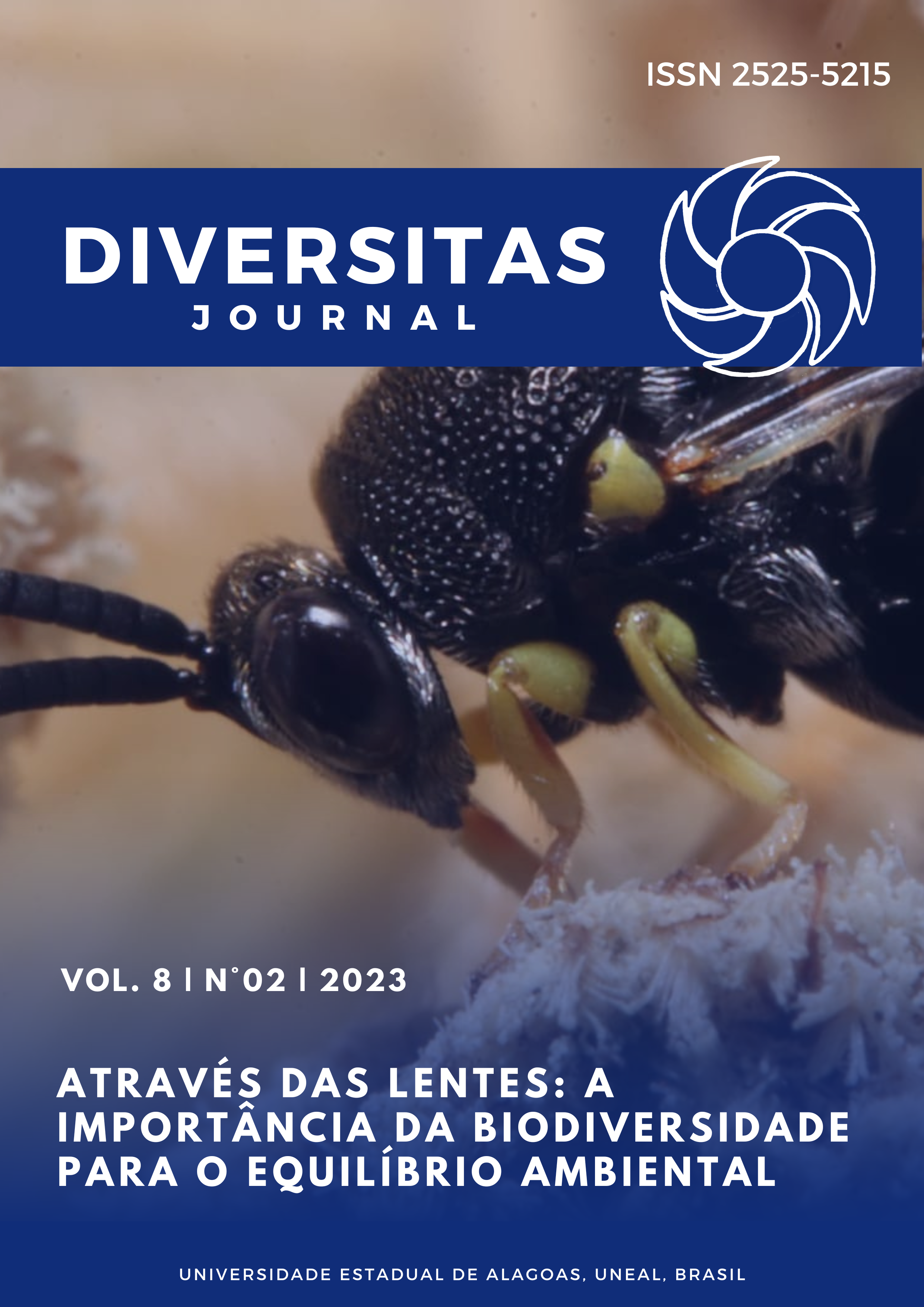An analysis of productive investment decision marking in Brazil during the COVID-19 pandemic
DOI:
https://doi.org/10.48017/dj.v8i2.2522Keywords:
covid-19 pandemic, productive investment, uncertainty, Keynes, interest rateAbstract
The goal of this paper is to analyse, from the perspective of the supply, how Brazilian productive companies act in moments of uncertainty and identifies the main factors that are associated to the execution of productive investment between the beginning of 2020 and the end of 2021, which was marked by COVID-19. Beside that, it ́s important to determinate the most important macroeconomic variables that impact the decision of the companies, as economic agents, to make productive investments in the country in times of economic instability. This is a qualitative work that has in its theoretical framework Keynesian theory as the main pillar and it’s also based on the scientific study of the most remarkable Brazilian economists who are concerned with examining the topic. The descriptive analysis showed that the decision making by the capital productive holders in moments of crisis goes with the Keynesian ideas. In summary, economic recovery must come not only through interest rate control, but also combined conjuctural and structural stimulus.
Metrics
References
AGÊNCIA DE NOTÍCIAS DA INDÚSTRIA (CNI). (2021). O mundo em 2022: perspectivas para o cenário econômico mundial e os desafios brasileiros. Revista Indústria Brasileira: Portal da Indústria.
ALVES, T. G.; VERÍSSIMO, M. P. (2010). Política monetária, crise financeira e Estado: uma abordagem keynesiana. Perspectiva Econômica. Jan/Jun 2010 v.6, p.1-21.
ANDRADE, R. P. (2011). A construção do conceito de incerteza: uma comparação das contribuições de Knight, Keynes, Shackle e Davidson. Nova Economia (UFMG. Impresso), v. 21 (2), Mai/Ago, 2011.
ARAÚJO, C. A; BRESSER-PEREIRA, L. C. (2022). Política monetária no Brasil em tempos de pandemia. Revista de Economia Política.
BANCO CENTRAL (Brasil). Estatísticas Fiscais. Todas as Publicações. 2021. Disponível em: https://www.bcb.gov.br/estatisticas/historicofiscais?ano=2021. Acesso: jan./2022
BORÇA JR., G.; FURTADO, M. Política macroeconômica pós-covid-19. (2020). Blog do IBRE: Fundação Getúlio Vargas (FGV).
BRESSER-PEREIRA, L. C. (2017). Desenvolvimento econômico, sofisticação produtiva e valor-trabalho. Working paper 450.
CNI Estatísticas. (2021). Indicadores industriais. Disponível em: https://www.portaldaindustria.com.br/estatisticas/indicadores-industriais/. Acesso em 05 de fev. 2022.
CNI. Portal da Indústria. (2021). Estudo sobre transporte de cargas aponta gargalos de infraestrutura no Brasil. Disponível em: https://noticias.portaldaindustria.com.br/noticias/infraestrutura/estudo-sobre-transporte-de-cargas-aponta-gargalos-de-infraestrutura-no-brasil/ Acesso em: 20 fev. 2022
DE PAULA, L. F. (2021). A crise do coronavírus e as políticas contracíclicas no Brasil: uma avaliação. IE-UFRJ Discussion Paper, maio 2021.
DE PAULA, L. F. de e PIRES, M. (2017). Crise e perspectivas para a economia brasileira. Estudos Avançados [online]. 2017, v. 31, n. 89, p. 125-144.
FGV, Blog IBRE. Taxa de investimentos no Brasil, dificuldade de crescer, 2022. Disponível em: <https://blogdoibre.fgv.br/posts/taxa-de-investimentos-no-brasil-dificuldade-de-crescer> Acesso em 10 de fev 2022.
GALA, P. (2021). Recuperação da economia brasileira virá pelo investimento em infraestrutura e consumo. Disponível em: <https://www.paulogala.com.br/recuperacao-da-economia-brasileira-vira-pelo-investimento-em-infraestrutura-e-consumo/ > Acesso em: 22 fev 2022.
GALA, P.; LIBÂNIO, G. (2008). Efeito da apreciação cambial nos salários, lucros, consumo, investimento, poupança e produtividade: uma perspectiva de curto e longo prazo. ANPEC, julho de 2008, v.1.4.
IBGE – INSTITUTO BRASILEIRO DE GEOGRAFIA E ESTATÍSTICA. Sistema de contas nacionais trimestrais; séries históricas – PIB a preços de mercado. Disponível em: https://www.ibge.gov.br/estatisticas/economicas/contas-nacionais/9300-contas-nacionais-trimestrais.html?=&t=serieshistoricas&utm_source=landing&utm_medium=explica&utm_campaign=pib#evolucao-taxa. Acesso em: jan./2022
IPEA. Carta de Conjuntura. Indicador IPEA de FBCF. (2021). Disponível em: https://www.ipea.gov.br/cartadeconjuntura/index.php/2022/01/indicador-ipea-de-fbcf-novembro-de-2021/. Acesso em: 14 de fev. 2022
IPEA. Relatório Institucional. (2020). Brasil pós-covid-19. Contribuições do Instituto de Pesquisa Econômica Aplicada, 2020. Disponível em:< https://www.ipea.gov.br/portal/images/stories/PDFs/relatorio_institucional/200724_ri_o%20brasil_pos_covid_19.pdf> Acesso em: 18 de jan. 2022
KEYNES, J. M. (1936). A teoria geral do emprego, juros e da moeda, London: Palgrave Macmillan.
PORTAL FGV IBRE. (2021). Indicadores de incerteza da economia. Disponível em: <https://portalibre.fgv.br/indicador-de-incerteza-da-economia> Acesso em: 22 fev. 2022.
Downloads
Published
How to Cite
Issue
Section
License
Copyright (c) 2023 Geovanna Mendes Marques, Thaís Alves

This work is licensed under a Creative Commons Attribution 4.0 International License.
The Diversitas Journal expresses that the articles are the sole responsibility of the Authors, who are familiar with Brazilian and international legislation.
Articles are peer-reviewed and care should be taken to warn of the possible incidence of plagiarism. However, plagiarism is an indisputable action by the authors.
The violation of copyright is a crime, provided for in article 184 of the Brazilian Penal Code: “Art. 184 Violating copyright and related rights: Penalty - detention, from 3 (three) months to 1 (one) year, or fine. § 1 If the violation consists of total or partial reproduction, for the purpose of direct or indirect profit, by any means or process, of intellectual work, interpretation, performance or phonogram, without the express authorization of the author, the performer, the producer , as the case may be, or whoever represents them: Penalty - imprisonment, from 2 (two) to 4 (four) years, and a fine. ”


















